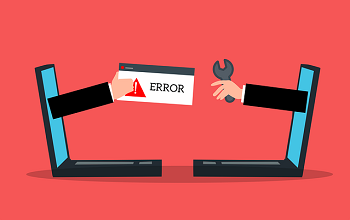
SAP’s Revolution in AI
Artificial intelligence (AI) has been a game-changer in a number of industries recently, and SAP is no exception. AI’s contribution to the improvement of enterprise resource planning (ERP) systems has become indispensable as companies depend more and more on SAP. The goal of integrating AI into SAP is to revolutionize organizational operations by increasing process efficiency, data insight, and intelligent decision-making. It goes beyond simply following current trends.
It is essential for SAP professionals to comprehend the potential of AI. AI has the potential to unlock new levels of productivity and accuracy in a variety of fields, including finance, HR, and complex supply chain management. Businesses can use AI to automate repetitive processes, extract more valuable insights from their data, and react to problems more quickly and accurately.
We’ll go over how to begin using AI in SAP in this guide, from learning the fundamentals to integrating AI-powered tools into your processes. This guide will provide you with the information and steps you need to master SAP with AI, regardless of your level of experience with the program.
Recognising the Fundamentals of SAP AI
Understanding the basic ideas of AI and how they apply to ERP systems like SAP is crucial before getting into the details of how AI can improve your SAP environment. Everything that comes after will be constructed using this understanding.
AI: What is it?
Artificial intelligence is essentially the computer simulation of human intelligence. These devices possess the ability to reason, learn, and carry out activities that normally call for human intelligence, like making decisions, solving problems, and comprehending spoken language.
Important AI Concepts
1. Machine Learning (ML): AI’s machine learning (ML) subfield allows computers to learn from data. ML can be used in the SAP context to automate decision-making procedures, forecast trends, and customize user experiences based on historical behavior.
2. Natural Language Processing (NLP): Machines can comprehend and react to human language thanks to artificial intelligence’s natural language processing (NLP) technology. NLP is used by SAP to power chatbots and virtual assistants, which assist users in navigating complicated systems and resolving problems without contacting customer support.
3. Automation: AI-driven automation aims to do repetitive tasks with less human intervention. AI, for example, can automate the processing of invoices, giving employees more time to concentrate on more strategic tasks.
Artificial Intelligence in Enterprise Resource Planning
The incorporation of AI into ERP systems, such as SAP, is completely changing the way businesses run. ERP systems have always been strong, but they can also be complicated and data-intensive. AI is beneficial because it simplifies processes, analyzes vast volumes of data instantly, and offers insightful information. AI, for instance, can suggest the best course of action, automate the response, or even help anticipate supply chain disruptions before they happen.
Keeping these fundamentals in mind, we can now investigate how AI is being used to transform various SAP modules, each in a different way.
AI’s Function in Various SAP Modules
The way AI is integrated into SAP isn’t universal. Different SAP modules use AI in different ways, improving different facets of business operations. We’ll look at how AI is changing important SAP modules in this section, making them more intelligent, quicker, and effective.
SAP S/4HANA’s AI
The ERP suite of the future, SAP S/4HANA, is leading the way in AI-driven change. S/4HANA, which is renowned for its real-time data processing powers, leverages AI to expand the realm of what is conceivable in ERP.
Sensible Enterprise Resource Planning
By integrating intelligent technologies into SAP S/4HANA’s core, AI improves the platform. For example, demand forecasting, inventory optimization, and cost reduction are all possible with machine learning-driven predictive analytics. Businesses can now make decisions based on real-time data instead of out-of-date or insufficient information thanks to AI-driven insights. Furthermore, automation features greatly reduce manual effort and error rates by streamlining procedures like financial close, invoice matching, and procurement.
SAP Ariba’s AI
AI is used by SAP Ariba, a top supply chain management and procurement platform, to improve supplier relationships and streamline procurement procedures.
Massive volumes of procurement data can be analyzed by AI in Ariba to spot patterns, forecast changes in price, and suggest suppliers. In order to guarantee compliance and lower the possibility of human error, it can also automate processes like contract management and purchase order creation. This frees up procurement teams to concentrate on strategic tasks like innovation and supplier negotiations.
SAP SuccessFactors with AI
SAP SuccessFactors is revolutionizing the way businesses attract, develop, and retain talent in the human capital management space by utilizing artificial intelligence.
AI is beneficial at all phases of the employee lifecycle, including performance management and hiring. AI-powered technologies, for instance, have the ability to scan resumes and match applicants with job openings according to experience and skill sets, greatly expediting the hiring process. AI can recommend tailored learning paths for newly hired employees based on their performance and career objectives, assisting in their advancement within the organization. AI is also capable of analyzing employee sentiment from surveys and feedback, giving HR departments information to enhance employee engagement and retention.
Introduction to AI in SAP
After discussing the revolutionary potential of AI across several SAP modules, it’s time to put it into practice. Although integrating AI into your SAP environment may seem difficult, you can make the shift efficient and painless by following a planned strategy.
Evaluating Your Present SAP Environment
It’s important to assess your current SAP setup before implementing AI tools and integrations. You can determine the areas where AI can have the biggest impact by having a thorough understanding of your current infrastructure, data quality, and user readiness.
Assessing AI Preparedness
1. Infrastructure: Verify that the AI technologies you want to use are supported by your IT infrastructure. This entails having sufficient connectivity, storage, and processing power. Because of their flexibility and scalability, cloud-based SAP solutions like SAP S/4HANA are frequently better suited to meet the demands of AI integration.
2. Data Quality: Data quality is essential for AI to function well, but the quality of the data is what makes AI so powerful. Check the accuracy, consistency, and completeness of your data. Reliable results from AI algorithms depend on well-organized, clean data.
3. User Readiness: Take into account how prepared your group is to use AI. This covers both their present skill levels and their readiness to adopt new technologies. Programs for change management and training can facilitate the shift.
Selecting Appropriate AI Instruments
The next stage after evaluating your environment is to choose the AI tools that work well with your SAP systems. SAP provides a range of AI-powered solutions to meet diverse business requirements. Examples include SAP Analytics Cloud’s AI-powered analytics and SAP Leonardo, which is designed for intelligent technologies.
When selecting tools, take into account things like:
• Integration Ease: How simple is it to incorporate the AI tool into the SAP environment you currently use?
• Scalability: Is the tool scalable to meet the demands of your business?
• Resources and Support: Does the tool include sufficient training materials, documentation, and support?
Configuring SAP with AI
It’s time to configure your AI tools in your SAP environment after you’ve chosen them. Here’s a methodical approach:
1. Integration: Begin by integrating your SAP modules with the AI tools. This could entail utilizing SAP’s pre-built connectors, setting up settings, or connecting APIs.
2. Data Preparation: Make sure your data is formatted and ready for use with artificial intelligence. This could entail normalization, classification, and data cleansing.
3. Testing and Validation: Conduct extensive testing of the AI features in a controlled environment prior to going live. Verify the outputs to make sure they satisfy your business’s needs.
4. Deployment: After you’re happy with the testing stage, roll out the AI features throughout your company. Keep a close eye on performance and be ready to adjust as necessary.
You can now begin utilizing AI’s capabilities to improve your business processes because it has been integrated into your SAP environment. To see these tools in action, we’ll examine real-world SAP AI use cases in the following section.
Real-World Applications of AI in SAP
The real value of AI in SAP is seen in its useful applications, which increase productivity and address actual business problems. This section will examine some of SAP’s most significant AI use cases and show how these technologies can revolutionize routine tasks.
Automating Typical Tasks
The automation of time-consuming, repetitive tasks is one of the most obvious benefits of AI in SAP. Businesses can free up valuable human resources for more strategic and creative endeavors by delegating these tasks to AI.
AI, for instance, can automate the process of matching incoming invoices with purchase orders and delivery notes in the finance industry. By doing this, errors that frequently happen with manual matching are minimized and the workload on accounts payable teams is decreased. In a similar vein, AI-powered bots can perform repetitive data entry duties, guaranteeing data consistency and lowering the possibility of human error.
Improving Judgment Making
By offering data-driven insights and predictive analytics, AI improves decision-making in SAP. This enables businesses to predict trends, reduce risks, and make wise decisions more quickly.
SAP Predictive Analytics
AI-powered predictive analytics is especially effective at forecasting and scenario planning. AI, for example, can predict fluctuations in demand in supply chain management by analyzing real-time inputs along with historical data. This lowers the possibility of stockouts and overstocking by enabling businesses to proactively modify their inventory levels.
Predictive models are used in financial planning to forecast cash flow, which helps CFOs make more precise investment and budgetary decisions. These insights aim to empower organizations to take charge of their destiny by making proactive, well-informed decisions, rather than merely forecast it.
Using AI to Improve Customer Service
Another area where AI in SAP is making major progress is customer service. Artificial intelligence (AI)-powered chatbots and virtual assistants are revolutionizing customer service by offering immediate assistance and handling problems without the need for human intervention.
An AI chatbot that is integrated with SAP Customer Experience (SAP CX) has the capability to respond to customer inquiries 24/7, offering assistance, managing orders, and even troubleshooting common issues. Customer satisfaction increases as a result, and customer support teams have less work to do, freeing them up to handle more complicated problems that call for human assistance.
Overcoming Adoption Challenges with AI
Although there is no denying SAP AI’s benefits, integrating AI is not without its difficulties. An easy transition or a difficult implementation process may depend on your ability to recognize and overcome these possible obstacles.
Typical Errors to Steer Clear of
1. Data Silos: Handling data silos—isolated data sources that hinder an overall perspective—is one of the main obstacles to the adoption of AI. AI effectiveness may be hampered in SAP environments where data is frequently dispersed across multiple modules and systems due to these silos. AI models might generate inaccurate or biased results if they don’t have access to complete and consistent data.
2. Opposition to Change: Another major obstacle is change management. Workers used to traditional workflows might be reluctant to embrace AI-driven procedures because they are afraid of losing their jobs or because they find the new tools scary. This opposition may limit the impact of AI and slow down its adoption.
3. Lack of Expertise: Using AI effectively calls for a particular skill set that might not be easily accessible within your company. Effective design, implementation, and maintenance of AI solutions may be hampered by the lack of data scientists, AI specialists, and SAP experts.
Best Practices and Solutions
In order to surmount these obstacles, contemplate the subsequent tactics:
Education and Transition Planning
1. Employee Training: To upskill your staff, make a significant investment in extensive training initiatives. In addition to teaching students how to use AI tools, training should also cover the advantages of AI and how it can fit into their roles. This can allay worries and boost self-assurance when utilizing AI.
2. Programs for Change Management: To facilitate the shift to AI, put in place organized change management activities. This entails being transparent about the function of AI, how it will be incorporated, and how it can supplement human labor rather than replace it. Resistance can also be decreased by involving staff members early in the process and asking for their opinions.
3. Working with Experts: If your company doesn’t have the necessary in-house knowledge, think about working with outside SAP consultants or AI experts who specialize in AI integration. They can offer helpful direction and assistance, guaranteeing a more seamless implementation procedure.
Future Trends: SAP’s AI Future
AI’s place in SAP is only going to grow as it develops further, providing even more sophisticated capabilities that will completely change how businesses operate. You can stay ahead of the curve and get your company ready for the next round of AI innovations by keeping an eye on these emerging trends.
Future Advances in AI
1. Advanced Machine Learning Models: It is anticipated that the upcoming generation of machine learning models will be more advanced and able to manage intricate, non-linear relationships found in data. For SAP, this translates into deeper insights, more precise forecasts, and the capacity to automate ever-more-complex tasks. These models will have a special influence in fields such as predictive maintenance, where they can even more precisely predict when equipment will break, saving downtime and money.
2. AI-Driven Cybersecurity: AI is anticipated to be a key component in boosting SAP’s security features as cyber threats grow more complex. Sensitive corporate data will be shielded from increasingly sophisticated attacks by AI-driven cybersecurity solutions that can identify and address threats in real-time. This will be especially crucial for sectors like finance and healthcare that handle significant amounts of sensitive data.
3. Autonomous ERP Systems: In the future, it’s possible that AI-powered ERP systems will become more commonplace, handling and streamlining essential operations with little to no human involvement. AI could make operational decisions, allocate resources, and modify workflows automatically in such a system based on predictive analytics and real-time data. This would represent a dramatic change from AI’s current assistive technology role to that of a central decision-making body in SAP environments.
Getting Ready for the Future
Making the most of AI in SAP requires being ready for these developments. Here are some actions that you can do:
Ongoing Education
1. Keep Up: The fields of SAP and AI are both developing quickly. By staying up to date on industry publications, webinars, and courses, you can keep up with the latest advancements in the field.
2. Invest in R&D: Encourage your company to make research and development investments. Trying out new AI technologies in a safe setting can yield insightful results and help you keep one step ahead of the competition.
3. Encourage an Innovative Culture: Encourage an environment that values innovation and ongoing development. Teams should be encouraged to experiment with AI tools, report back on their findings, and use the new information to enhance operations.
You can make sure your company stays competitive and is ready to take advantage of SAP’s upcoming AI innovations by being aware of and prepared for these trends.
Your Initial Steps Towards SAP AI Mastery
Starting the process of integrating AI into your SAP environment is a wise decision that can have a big impact, from automating repetitive tasks to enabling data-driven decision-making. As we’ve seen, AI has enormous potential in SAP, extending the limits of what’s feasible and affecting every facet of enterprise resource planning.
Summary of the Main Points
• Comprehending AI: Essentially, AI is about giving machines the ability to think like humans, so they can do tasks that would normally need human assistance. This covers everything in SAP, from forecasting market trends to automating data entry.
• AI Throughout SAP Modules: Artificial Intelligence is revolutionizing various aspects of business operations, including talent management in SAP SuccessFactors, procurement optimization with SAP Ariba, and predictive capabilities enhancement in SAP S/4HANA.
• Getting Started: Crucial first steps include evaluating your current environment, selecting the appropriate tools, and organizing your data. The road to AI integration will be easier to navigate if obstacles like data silos and resistance to change are overcome.
• Real-World Applications: AI can improve customer service by automating repetitive tasks, enhancing decision-making with predictive analytics, and enhancing communication through chatbots and virtual assistants.
• Future Trends: To stay on top of AI developments in SAP, one must monitor developments such as sophisticated machine learning models, cybersecurity powered by AI, and the possible emergence of autonomous ERP systems.
Practical Next Actions
1. Start Small: To incorporate AI into a particular SAP module or procedure, start with a pilot project. Take this as a teaching opportunity to improve your strategy and boost your self-assurance.
2. Engage with AI Experts: Make sure you have access to the knowledge and experience needed to steer your AI integration journey, whether through partnerships or hiring.
3. Leverage AI Resources: To continuously upskill your team, make use of the plethora of resources available, including webinars and training programs from the industry as well as SAP’s own AI tools.
It’s important to keep in mind that learning AI in SAP is an ongoing process as you begin your journey. You can put your company in a position to fully benefit from artificial intelligence’s transformative power by remaining informed, experimenting with new technologies, and encouraging an innovative culture.
Sign up for Free Essentials Plan.
Get 20,000 tokens every month — no credit card required.
 October 14, 2024
October 14, 2024
Recent Blogs
-
SAP Transaction Code Guide: Instantly Master Any SAP T-Code
-
Download the SAP Consultant’s Time-Saving Playbook
-
SAP Error Assistant: Outperforming ChatGPT for Real SAP Solutions
-
A Day in the Life of an SAP Security Consultant: Humor and Hustle
-
SAP Database Error (DBIF_RSQL_SQL_ERROR): How to Diagnose and Fix It


